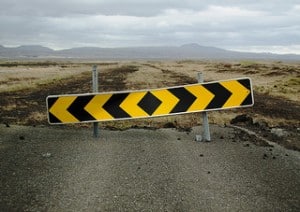This week’s all about writers: men who penned words and men who penned music. (Yes, all men. I reaffirm my thesis that women and minorities share some kind of immortality.) Two wrote songs, two created unforgettable moments and three were journalists. There must be something to that pen is mightier than the sword thing.
Malcom Browne 1931 to three weeks ago Monday
This Pulitzer Prize winning journalist took one of the most powerful pictures in history. His 1963 photograph of a Vietnamese monk setting himself on firein protest of the USA backed government was called by President Kennedy the most emotional in history. On its force, Kennedy rewrote US policy toward Vietnam. Exactly what he leaves behind is unclear: no one knows what US policy in Vietnam looks like without his startling photograph. But neither that policy nor the hearts of those who saw the photograph on newspaper front pages around the world would have been the same without him.
Henry Herx 1933 to four weeks ago Wednesday
This writer is my idol. Certainly the most published alum of my beloved Loyola University Chicago (Go Ramblers!), he created the National Catholic Office for Motion Pictures. The office assessed movies on merits both aesthetic and moral for the U.S. Bishops’ Conference. Of 1991’s long forgotten, ‘The Pope Must Die,’ Herx wrote this: “The title alone is all one needs to know of the bad comic taste of those who concocted this flaccid little farce about a bumbling country priest who is mistakenly elected pope due to a clerical error.” He pronounced that movie an A-4 his esoteric rating scale of morality: ‘appropriate for adults but not for casual viewing.’ He leaves behind the office of the bishops that still doles out sometimes-hilarious reviews movies, as well as the long-winded, pithy style to which yours truly aspires.
Clarence Clemons 1942 to 64 weeks ago Saturday
Bruce Springsteen came through Chicago last week. And all 40,000 of us at Wrigley felt the loss of the E-Street Band saxophonist. This would have been the 40th year Clemons and his soulful sax played at Springsteen’s side. You see, Clemons was the most articulate member of the band. When The Boss’s lyrics weren’t enough to tell the story–when they simply could not show the desperation of Jungleland’s lonely-hearted lovers or give born-to-run Bruce the knowledge that love is real–Clemons would say with his sax what couldn’t be said with words. He was the soul of the E-Street Band. He leaves behind his solos, their revelation of the ineffable, and the miraculous sight of thousands of white people actually clapping on the twos and fours.
Albert Marre 1924 to last Tuesday
Marre was a Broadway director famous for originating ‘The Man of La Mancha,’ a musical version of Cervantes’s ‘Don Quixote.’ In doing so, he punished many a theatre director who had to sit through auditions filled with screeching renditions of its most famous number, ‘The Impossible Dream’ (which the snarkier rechristened ‘Sing the Impossible Note.’). He leaves behind the pained scowls on the faces of his long-suffering fellow directors.
Hal David 1927 to two weeks ago Saturday
You know those songs that ask you questions? “What Do You Get When You Fall in Love?” “What’s New, Pussycat?” “Do You Know The Way To San Jose?” Did you know that David was the man who penned them for Burt Bacharach, Tom Jones and Dionne Warwick? Others of his songs–like “What The World Needs Now (Is Love)” (which has seen more than 150 different recordings)–answered questions. He leaves behind tunes that held together movies as disparate as ‘My Best Friend’s Wedding,’ ‘Austin Powers’ or ‘Butch Cassidy and the Sundance Kid.’ Also the Notorious B.I.G. song, Warning (seriously).
Gaeton Fonzi 1935 to two weeks ago Thursday
A tireless and critical investigator of the Kennedy Assassination, his dissatisfaction with the ‘no-kidding’ conclusion of the Warren Commission (“Kennedy was probably assassinated as a result of a conspiracy”) fueled his work. His constant critique gave credence to the many Kennedy conspiracy theories and perhaps contributed to the profound distrust of the American Government to which we are now so accustomed.
Ron Taylor 1934 to Sunday
This is the guy who filmed that famous title-character-eating-the-cage scene from the movie ‘Jaws’ (which, by the way, is the only scene from the film to feature a real, live shark). Though shark attacks may have been a turn-on for his wife–“It’s a real thrill to sit down there and have a wild animal trying to chew your arm off,” she said in the television interview–this wasn’t true for many others. He leaves behind scores of ruined date nights in the summer of ‘75.
